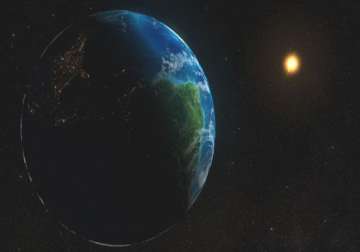New Delhi, Jan 1 : The Earth will be closest to the Sun tomorrow at 10:10 am IST at a distance of 147 million kilometres, Planetary Society of India General Secretary N Sri Raghunandan Kumar said today.
Every January, the Earth is at perihelion, the closest from the Sun for the year, and in July it is at aphelion, the farthest to the Sun for the year, he said.
This year the earth will be at aphelion on July 5.
The word perihelion comes from the Greek words “peri” (meaning “near“) and “helios” (meaning “sun“).
All planets, comets and asteroids in our solar system have elliptical orbits. Thus, they all have a closest and a farthest point from the Sun – a perihelion and an aphelion, he said.
Explaining the reason why the temperature does not rise on Perihelion Day even when the sunlight is more, Kumar said, “There are many reasons for it. Blame it on the tilt of the Earth's axis. Actually, our seasons are determined by the tilt of the Earth and not by how close the Earth is to the Sun.”
When the New Year brought in the year 2013, our planet Earth was very close to its perihelion– its closest point to the sun for the year.
In 2013, Earth comes closest to the sun on Wednesday, January 2 at 5 hours Universal Time (UT). Translating UT to Central Time in the United Sates, perihelion happens last this evening, on Tuesday, January 1, at 11:00 p.m. CST.
The word “perihelion” is from the Greek words peri meaning near, and helios meaning sun.
Earth is closest to the sun every year in early January, when it's winter for the Northern Hemisphere.
We're farthest away from the sun in early July, during our Northern Hemisphere summer. So you can see that Earth's distance from the sun isn't what causes the seasons. On Earth, it's mostly the tilt of our world's axis that creates winter and summer.
In winter, your part of Earth is tilted away from the sun. In summer, your part of Earth is tilted toward the sun. The day of maximum tilt toward or away from the sun is the December or June solstice.
Earth is about 5 million kilometers closer to the sun in early January than it will be in early July. That's not a huge change in distance. It's not enough of a change to cause the seasons on Earth.
Latest India News

